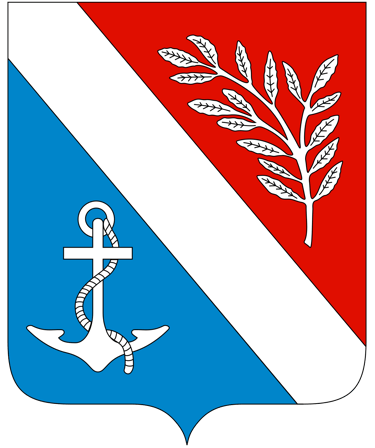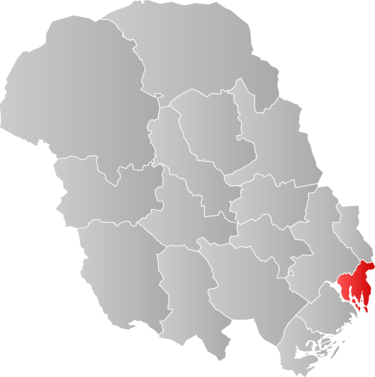Coming Soon


Porsgrunn Kommune
Pop. 34,377; Area 161 sq. km. (62 sq. mi.)
The settlement of Porsgrunn started in the 1650s as a deep-water harbor for Skien and was considered part of Skien until 1842. The name "Porsgrunn" comes from the "pors" (bog myrtle) shrub that still grows around Eidanger. The kommune's emblem has the city's small river represented by a diagonal silver line. The silver anchor on the blue background represents the importance of the harbor, and the branch on the red background is from the bog myrtle shrub.
Porsgrunn kommune includes the town of Brevik and the Eidanger area. Although the sea coast, forests, lakes, and farmland lie within the city limits, the city has a strong concentration of industrial activity. Norsk Hydro's Porsgrunn factories at Herøya are Norway's largest single place of employment. Other important industries are Norcem Company, Elkem, Porsgrunds Porselønsfabrik, Isola, and Beha. The neighborhood of Osebakken contains well-preserved homes of wealthy sea captains.
Langangen at the head of the Langangen fjord is most famous for the "Corkscrew," a curlicue highway now replaced by two high suspension bridges. Bergsbygda, south of Highway E 18, has Stone Age sites and a hill fort that bears witness to ancient settlement. Hollander House, a wooden structure from the 1600s, is a remembrance of the international trade relations brought about by the flourishing timber exports of the past.
Brevik was an independent community until its union with Porsgrunn in 1964 and an important export harbor for timber and ice. It became an official town by royal decree in 1845 but was a center of commerce as early as the 16th century. It is located on the Eidanger headland. Many of the original wooden buildings have been preserved and are still in use. On Sylte Island you will find the almost intact old neighborhood of captains' and seamans' houses. Early in the summer "Brevik Days" are celebrated with concerts, exhibitions, guided tours through the old neighborhoods, and other activities. The naval hero admiral Curt Sivertsen Adeler, 1622-1675, came from Brevik. Currently, the Dalen Portland cement company is the largest employer.
Sights to See
Eidanger Church is a Romanesque stone church built in the 12th century.
Porsgrunn City Museum is a restoration of several old buildings reflecting the maritime history and the traditions of the Porsgrunds porcelain factory.
The Porsgrunds Porselænsfabrik, established about 100 years ago, lies on the western bank of the river. Guided tours trace the production of porcelain from clay to finished product. The factory shop is a good place to buy souvenirs.
Porsgrunn West Church was built in 1758 with an inner structure of logs, paneled on the inside and outside.
Porsgrunn East Church was built in 1760 in the Rococo style. It is noted for its tower and spire and its unique collection of church chairs.
Borgestad Manor, home of former Prime Minister Gunnar Knudson, lies up river between Porsgrunn and Skien. The main part of the building dates from around 1700 and its baroque style is characteristic of that period.
Our Lady's Church is a Catholic stave church.
Versvik, at Herøya, is a conservation area and nature reserve with many rare plants.
Brevik Town Hall and Museum was built in the 1760s as a private residence for a wealthy merchant, Jørgen Chrystie. Called Coche House, it is a rococo-style wooden building. It has been used as the town hall and is now the local museum. The exhibits cover a wide range of subjects, most having to do with the town's history of shipping and commerce. A late 19th-century general store and the town's old Apothecary are displayed.
Captain Sørensen's House is a restored old "Skipper's House" now used as an art gallery.


Bygdebok for Porsgrunn
T¢nnessen, Joh. Porsgrunns historie. Porsgrunn: H. Joh. Dyrings Bokhandel 1956.
Bd. I. Fra lasteplass til kj. Fra lasteplass til kj¢pstad, 1576-1807.
Bd. II. Fra trelast og skipsfart til industri, 1807-1920.
Porsgrund historielag. Årsskriftþ. 1/1958- .
